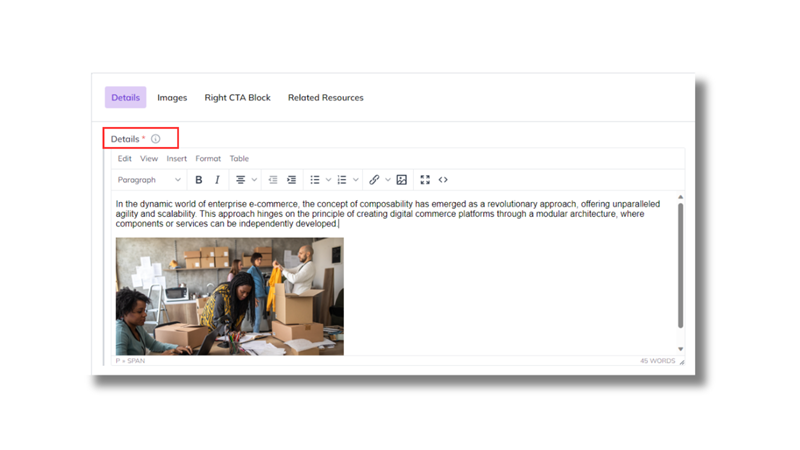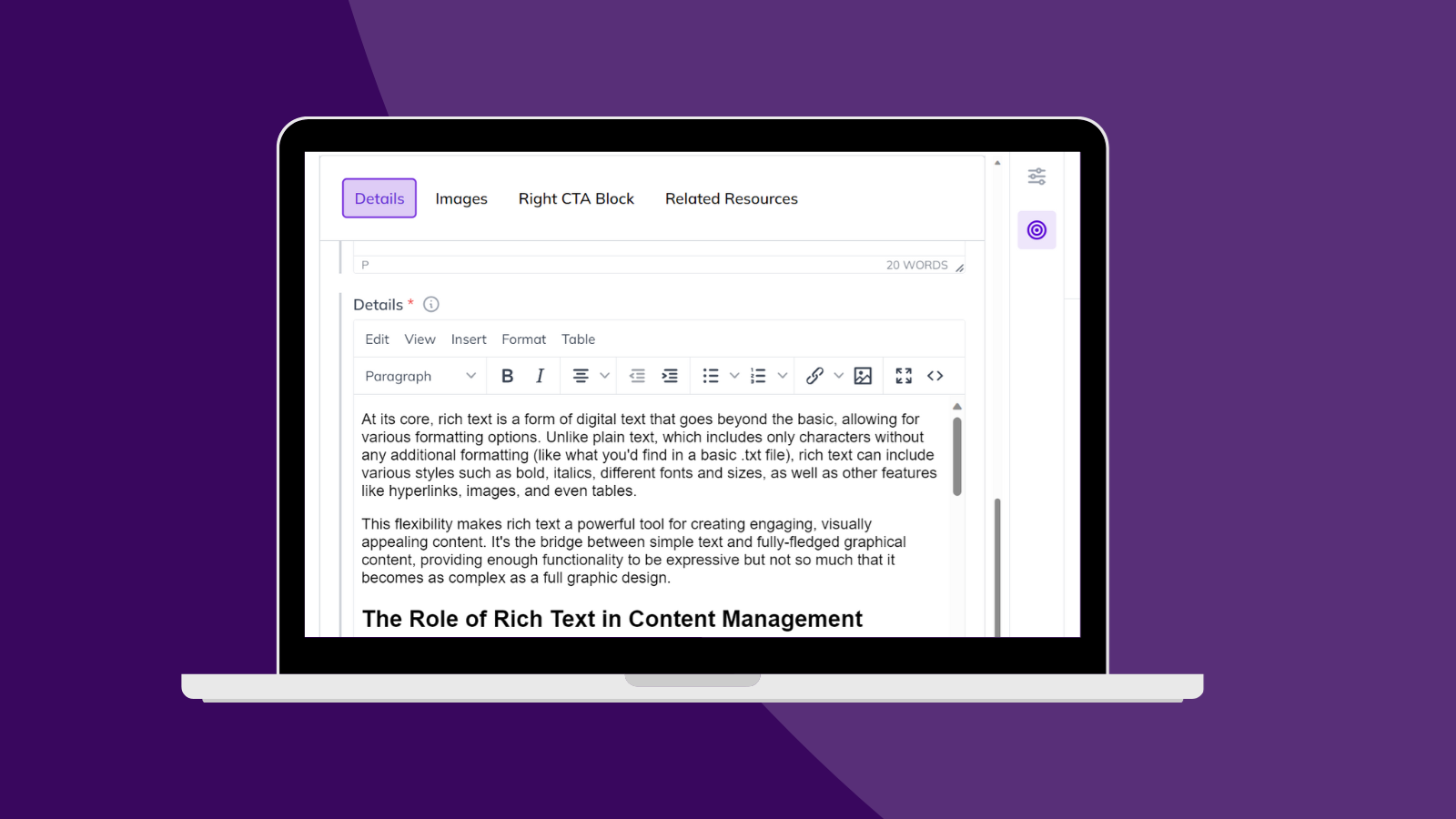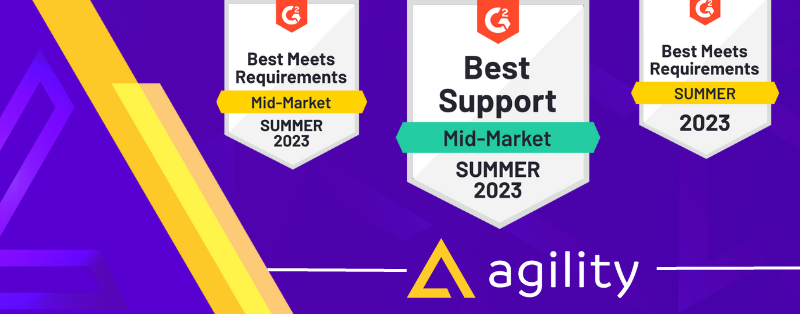At its core, rich text is a form of digital text that goes beyond the basic, allowing for various formatting options. Unlike plain text, which includes only characters without any additional formatting (like what you'd find in a basic .txt file), rich text can include various styles such as bold, italics, different fonts and sizes, as well as other features like hyperlinks, images, and even tables.
This flexibility makes rich text a powerful tool for creating engaging, visually appealing content. It's the bridge between simple text and fully-fledged graphical content, providing enough functionality to be expressive but not so much that it becomes as complex as a full graphic design.
The Role of Rich Text in Content Management
In content management systems, rich text is a fundamental feature. It allows content creators to produce and manage content that is both informative and aesthetically pleasing. In traditional CMS platforms, rich text is often part of a WYSIWYG (What You See Is What You Get) editor, making it easy for users without coding knowledge to create and format content.

Rich Text in the Context of Headless CMS
The advent of headless CMS has changed how rich text is used and managed. Unlike traditional CMS, where the content and presentation are tightly coupled, a headless CMS decouples them. This means that the way rich text is handled in a headless CMS is slightly different.
In a headless CMS, rich text content is typically input and stored in a format like HTML or Markdown. This allows the content to retain its rich formatting (like headers, lists, bold text, etc.) but in a way that is independent of its final presentation. The CMS then delivers this content via APIs to various front-end systems (like websites, apps, or other digital platforms), where it is rendered according to the specific requirements of each platform.
Agility CMS and Rich Text
Agility CMS, being a headless CMS, provides robust support for rich text. It offers a rich text editor within its content management interface, enabling content creators to input and format their content easily. The rich text in Agility CMS is flexible and adaptable, designed to be rendered consistently across different front-end systems.
If you hadn't caught on already... you're reading content built with rich text in Agility CMS.
Moreover, Agility CMS stores this rich text in a way that's easily retrievable and renderable by different front-ends, be it a web application, mobile app, or any other digital interface. This flexibility is particularly valuable in today’s multi-platform digital environment, where content needs to be consistent and responsive across diverse channels.




